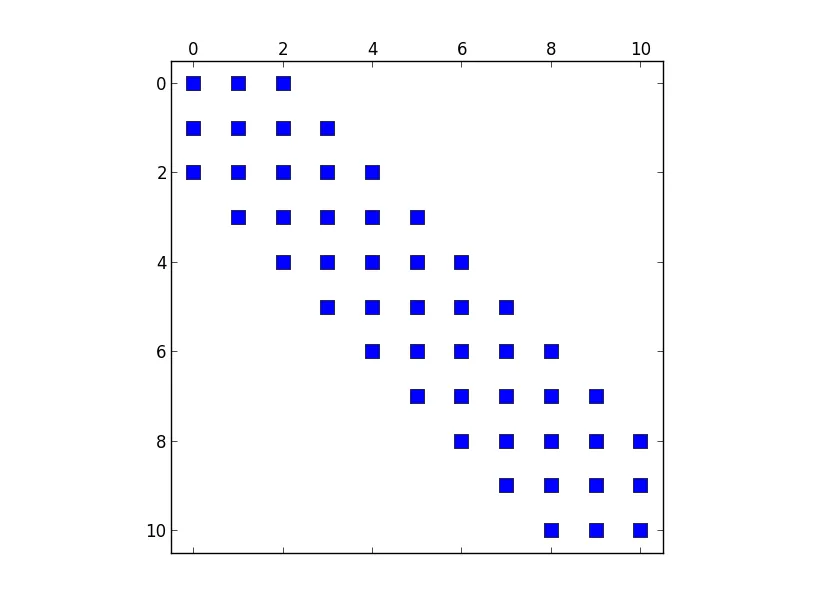我已经编写了一段小代码,想要用于解决涉及大稀疏矩阵的特征值问题。目前它能够正常工作,我现在想做的是将稀疏矩阵中的某些元素设置为零,即最顶行的元素(这对应于实现边界条件)。我可以调整下面的列向量(C0、C1和C2)来实现这一点。然而,我想知道是否有更直接的方法。显然,NumPy索引在SciPy的稀疏包中不起作用。
import scipy.sparse as sp
import scipy.sparse.linalg as la
import numpy as np
import matplotlib.pyplot as plt
#discretize x-axis
N = 11
x = np.linspace(-5,5,N)
print(x)
V = x * x / 2
h = len(x)/(N)
hi2 = 1./(h**2)
#discretize Schroedinger Equation, i.e. build
#banded matrix from difference equation
C0 = np.ones(N)*30. + V
C1 = np.ones(N) * -16.
C2 = np.ones(N) * 1.
diagonals = np.array([-2,-1,0,1,2])
H = sp.spdiags([C2, C1, C0,C1,C2],[-2,-1,0,1,2], N, N)
H *= hi2 * (- 1./12.) * (- 1. / 2.)
#solve for eigenvalues
EV = la.eigsh(H,return_eigenvectors = False)
#check structure of H
plt.figure()
plt.spy(H)
plt.show()
这是由上面的代码创建的矩阵的可视化。我想将第一行中的元素设置为零。